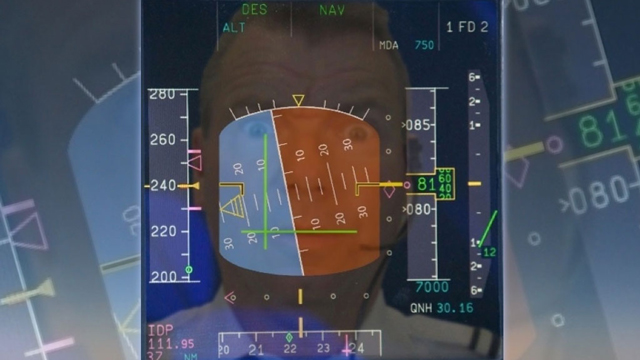In recent years, the increased awareness of Loss of Control In-flight (LOC-I) as the predominant cause of fatalities in all segments of aviation has led to an increased interest in Upset Prevention and Recovery Training (UPRT). As numerous groups have devoted research and analysis into the disproportionate rate of LOC-I fatalities, the search for answers has focussed on essential pilot training elements to address a systemic problem in the ability of pilots to avoid or recover from unexpected airplane upsets. Both the problem and the potential solution have narrowed in on the human physiological and psychological response to the stresses present in an unanticipated upset event.
Startle and Surprise

Improved understanding of how the mind works in such situations indicates that the surprise and startle of an airplane upset can affect cognition, slowing a pilot’s thoughts and responses when time is critical. In such situations pilot performance will not creatively rise to the occasion (creativity is one of the first items to leave the scene in an emergency), but will be based on established habit patterns. In situations involving aircraft upset events, certain instinctive responses developed from experience in the normal flight envelope, and appropriate in that realm, can increase risk, potentially even becoming life threatening.
In high threat situations, such as an airplane upset, the pilot’s brain will naturally look for an immediate course of action from the accumulation of past experience. If the pilot has no experience outside of the normal flight envelope, options and ideas will necessarily be based on their experience in that domain alone. To effectively counter aerodynamic characteristics and behavior of an aircraft that may have departed controlled flight, pilots must have appropriate training to develop correct responses in an environment relevant to the situation encountered.
Developing Resilient Skills
The limits of mental response in an emergency are not only constrained by essential knowledge and skills, but also by the accessibility to that information in an emergency; the ability to effectively put that information to use. Even if we learn upset prevention and recovery techniques in a flight simulator, they may not be fully useful in flight if other physiological and psychological conditions which are present in an emergency override and inhibit the ability to execute those techniques in the real world. Buffeting, vibration, increased rates of pitch or roll motion, increased or decreased G levels are all absent in the simulator environment. The perception of risk and threat of consequences, absent from the virtual world but very present in the real world, affect the brain’s ability to effectively perform as needed in an upset event.
Performing recovery exercises in an aircraft provides the benefit of the pilot actually feeling the sustained G-forces and other stimuli which are not accurately replicated in a flight simulator. The experience of realism is bolstered by the fact that the aircrew actually perceive managed risk, a feeling not present in the simulator where the only threat of consequence is related to passing a checkride. ICAO, IATA, EASA and others realize this, which is why they all agree that an on-aircraft component of UPRT is needed to fully address the important human factors associated with airplane upsets in an effective manner.
The human factors and reality present in actual airplane upset events must be provided to pilots in order to establish the performance required in crisis. This required intensity of training, incorporating factors absent in flight simulation and most currently required pilot licensing training, is essential to the mitigation of the LOC-I threat, the number one cause of fatalities in aviation.
Required Intensity for Effective UPRT

What is often neglected in developing on-aircraft upset training, is research-backed answers to critical training considerations: how much training will it take? How many flights? How many days? Merely experiencing new stimuli and visual or sensory inputs in a single flight may erase some novelty, but it does not develop proficiency.
Considering the counterintuitive nature of some of the information and skills in comparison to flight within the normal envelope, we have to understand that the process of ingraining new skills which must be reliable in the face of an escalating upset threat does take a certain amount of time. The need for repetitive practice of new skills to create a consistent response, even when danger is imminent and stress levels are high, is well understood. The process of creating new mental models, or imprinting new neural pathways that assist in pattern recognition is not immediate.
The experience of training thousands of professional pilots has conclusively identified that the necessary process of UPRT indoctrination and practice cannot be reliably accomplished in less than 3-4 flights over a two to three day period. In the big picture of a professional pilot’s career and the threat reduction achieved, there is simply no more efficient use of training time than UPRT for the safety benefits gained.
Exposure is Not Enough
Effective UPRT must create skills which are reliable and dependable in the face of an escalating upset. This requires multiple flights and repeated practice of the new skills until proficient. Make sure that when you are selecting a course of UPRT instruction, that there is sufficient flight time devoted to allow for the repetition required to truly build robust recovery skills, and which provides the intensity of training to create UPRT skills that you can rely on when needed in an emergency upset event.
Updated 6/2021




Comments: